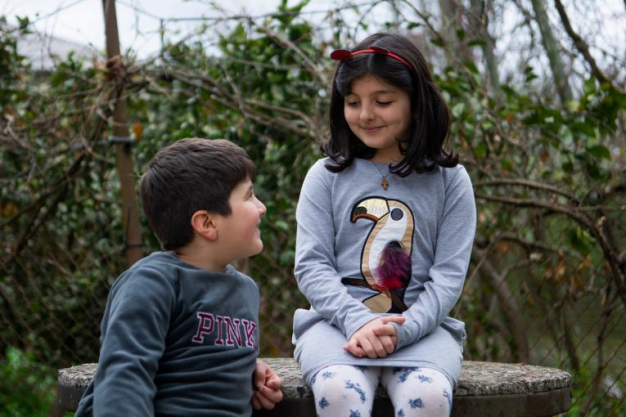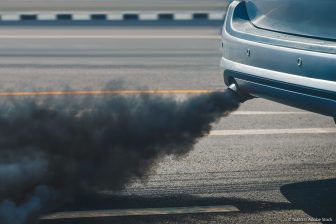
Lead is poisoning children ‘on a massive scale’ – report
Children across the world are being poisoned by lead on a huge and previously unknown scale, says a shocking new report from UNICEF and anti-pollution organisation, Pure Earth.
Nearly 800 million young people – around one in three – have blood lead levels of five or more micrograms per deciliter (µg/dL), the level at which requires action.
Nearly half of these children live in South Asia, according to The Toxic Truth: Children’s exposure to lead pollution undermines a generation of potential, a report which is the first of its kind focusing predominantly on lead.
“With few early symptoms, lead silently wreaks havoc on children’s health and development, with possibly fatal consequences,” said Henrietta Fore, UNICEF Executive Director. “Knowing how widespread lead pollution is – and understanding the destruction it causes to individual lives and communities – must inspire urgent action to protect children once and for all.”
‘Urgent action to protect children’
The report is a detailed examination of childhood lead exposure carried out by the Institute of Health Metrics Evaluation (IHME) and verified with a study published in the journal Environmental Health Perspectives.
Lead is highlighted as a potent neurotoxin which causes irreparable harm to children’s brains. It is particularly damaging to the under-fives and babies, as it damages brains which have not yet had the chance to fully develop. The results can include lifelong neurological, cognitive and physical impairment.
Childhood lead exposure has also been linked to mental health and behavioural problems, and to an increase of crime and violence. Older children suffer severe consequences including increased risk of kidney damage and cardiovascular diseases in later life, the report says. Childhood lead exposure is estimated to cost lower- and middle-income countries almost US Dollars $1 trillion due to lost economic potential of these children over their lifetime.
Informal and substandard recycling of lead-acid batteries is, says the report, a leading contributor to lead poisoning in children living in low and middle-income countries, which have experienced a three-fold increase in the number of vehicles since 2000. The increase in vehicle ownership, combined with the lack of vehicle battery recycling regulation and infrastructure, has resulted in up to half of lead-acid batteries being unsafely recycled.
Occupations can expose children
City environments are a major source of other sources of childhood lead exposure, such as lead in water from the use of leaded pipes; lead from active industry, such as mining and battery recycling; lead-based paint and pigments; leaded gasoline, which has declined considerably in recent decades, but was a major historical source; lead solder in food cans; and lead in spices, cosmetics, ayurvedic medicines, toys and other consumer products.
Even parents whose occupations involve working with lead often bring contaminated dust home on their clothes, hair, hands and shoes, can inadvertently be exposing their children to the toxic element.
‘Dangerously high levels’
While blood lead levels have declined dramatically in most high-income countries since the phase-out of leaded gasoline and most lead-based paints, blood lead levels for children in low- and middle-income countries have remained elevated and, in many cases, dangerously high even a decade after the global phase-out of leaded gasolines.
The report features five country case studies where lead pollution and other toxic heavy metal waste have affected children. These are Kathgora, Bangladesh; Tbilisi, Georgia; Agbogbloshie, Ghana; Pesarean, Indonesia; and Morelos State, Mexico.
Governments in the affected countries are urged to address lead pollution and exposure among children using a coordinated and concerted approach across these areas:
- Monitoring and reporting systems including building capacity for blood lead level testing.
- Prevention and control measures including preventing children’s exposure to high-risk sites and products that contain lead, such as certain ceramics, paints, toys and spices.
- Management, treatment and remediation including strengthening health systems so that they are equipped to detect, monitor and treat lead exposure among children; and providing children with enhanced educational interventions and cognitive behavioural therapy to better manage the negative effects of lead exposure.
- Public awareness and behaviour change including creating continual public education campaigns about the dangers and sources of lead exposure with direct appeals to parents, schools, community leaders and healthcare workers.
- Legislation and policy including developing, implementing and enforcing environmental, health and safety standards for manufacturing and recycling of lead acid batteries and e-waste, and enforcing environmental and air-quality regulations for smelting operations.
- Global and regional action including creating global standard units of measure to verify the results of pollution intervention on public health, the environment and local economies; building an international registry of anonymized results of blood lead level studies; and creating international standards and norms around recycling and transportation of used lead acid batteries.
Richard Fuller, president of Pure Earth, said: “The good news is that lead can be recycled safely without exposing workers, their children, and surrounding neighborhoods. Lead-contaminated sites can be remediated and restored. People can be educated about the dangers of lead and empowered to protect themselves and their children. The return on the investment is enormous: improved health, increased productivity, higher IQs, less violence, and brighter futures for millions of children across the planet.”
Click here to view the report.




